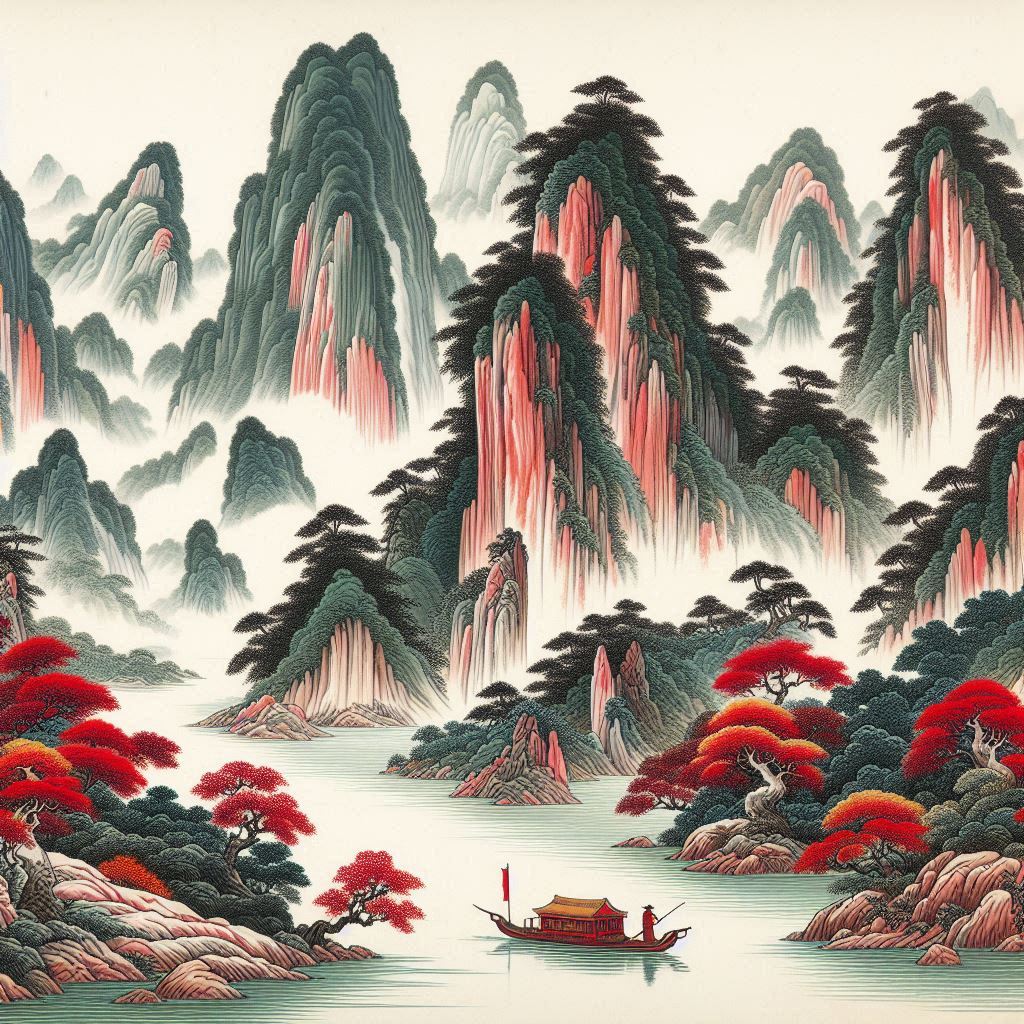Introduction to the disharmony
Major symptoms:
- tremors of the limbs (Parkinson’s disease)
- convulsions
- rigidity and arching of the back and neck
- deviation of the eye and mouth
- paralysis of the body or tongue
- high temperature
- severe dizziness
- sudden unconsciousness
- coma
In traditional Chinese medicine the disharmony that manifests with tremors is called "internal wind". There are two disharmonies related to “wind”. One is provoked by the external climatic factor wind and therefore is considered an “exterior” condition. There are two types of external wind - “Wind-Cold” and “Wind-Heat” - and they manifest with common cold/flu-like symptoms.
The other “wind” condition is interior. The most common cause for “internal wind” is Yin deficiency. To understand this cause we need to quickly review how the concept of Yin and Yang is implemented in traditional Chinese medicine.
Yang in nature represents activity thus logically represents function in human physiology. Yin in nature represents rest, quiet, slowness thus represents structure, substance and matter in the human body. Thus Yin represents the material aspect of the human body such as blood and body fluids, while Yang is the force that makes it come to live(1).
There is good health when Yin and Yang are in balance. When Yang is deficient Yin instantly becomes excessive. Yang deficiency manifests in coldness, lethargy, overflow. When there is Yin deficiency the warming principle of the body (Yang) becomes excessive which in time will lead to accumulation of heat.
If the heat remains untreated it will become so intense and moving that it will transform into “wind”. The symptoms of "internal wind" are manifested either by intense movement in the form of tremors and convulsions or by lack of any movement - rigidity and paralysis(3). Symptoms of "Liver Wind" are tremor of the limbs (Parkinson’s disease), convulsions, severe dizziness and sudden unconsciousness(2)(3) but also rigidity of the neck(2)(4), arching of the back, deviation of the eye and mouth and paralysis of the body or tongue(3).
Chronic blood deficiency may also lead to the accumulation of “internal wind” as blood is part of Yin. In such cases symptoms would include numbness of the limbs(3), paleness (the major symptom of blood deficiency), blurred vision and dizziness.
Most of the herbs that extinguish “internal wind” and stop tremors are animal substances. It is tought that shellfish and mollusk anchor the Yang (the heat) while worms "gather in the wind"(5). Most of the herbs in this class are also cold. This is for the purpose to neutralize the excess heat that generates internal wind.
Major Chinese Herbs
Ling Yang Jiao ( Saiga tatarica L.) is antelope horn. It strongly subdues internal wind and benefits seizures and convulsions. Di Long (Pheretima aspergillum) is earthworm. This salty, cold substance besides entering the Liver and benefiting tremors and convulsions has also recently been used for schizophrenia(5) The herb also enters the Lung and clears Lung heat. Thus it can be used as an aid to stop smoking, as long term smokers develop Lung Heat (the cigarettes have hot nature), which is big part of the dependence.

Quan Xie (Buthus martensi) is scorpion. It strongly extinguishes wind and is used for “internal wind” symptoms such as childhood convulsions and twitches. Wu Gong (Scolependra subspinipes mutilans L.) is centipede. It addresses “internal wind” symptoms, manifesting in intense uncontrollable movement. It is also an antidote for poisonous snake bites. Jiang Can (Bombix mori L.) is silkworm. Just like the centipede it is used for intense movement but also lack of movement, such as facial paralysis, due to “internal wind”(5).
An interesting herb that is not from the animal kingdom is Gou Teng (Uncaria rhynchophylla), translated as "hooky branches" as its thorns look like hooks. This herb is appropriate for the beginning stages of convulsions and beneficial for convulsions in children(6).
Healing foods
To treat "Liver Wind" both the symptom and the cause of the disharmony need to be addressed. Thus heat in the Liver needs to be cooled while Yin needs to be build in order to restrain the excess heat energy. Selecting cooling and “substance building” foods and herbs is the way to approach this disharmony.
To unlock the rest of this article select "Yes, I want to learn!" below.

Food therapy is the most economical and non-toxic biochemical approach to health and disease. Food is something we continuously use to sustain our lives. Learning what foods are healing (and what disruptive) for each condition has the potential to convert every meal into a form of therapy.
YS
(1) Zhang, Enqin (1990). Basic Theory of Traditional Chinese Medicine. Shanghai: Publishing House of Shanghai College of Traditional Chinese Medicine
(2) Yang Weiyi, Meng Fanyi, Jiang Yuanan(2002). Diagnostics of Traditional Chinese Medicine. Beijing: Beijing University of Chinese Medicine and Pharmacology
(3) Maciocia, Giovanni (1989). The Foundations of Chinese Medicine. Edinburgh: Harcourt Publishers Limited
(4) Deng Liangye, Gan Yijun, He Shuhui, Ji Xiaoping, Li Yang, Wang Rufen, Wang Wenjing, Wang Xuetai, Xu Hengze, Xue Xuiling, Yuan Jiuling (1987). Chinese Acupuncture and Moxibustion. China: Foreign Languages Press
(5) Benski, Dan & Gamble, Andrew (1993). Materia Medica, Revised Edition. Seatle: Eastland Press, Incorporated
(6) Lu, Henry (2005). Chinese Natural Cures. New York: Black Dog & Leventhal Publishers, Inc.
(7) Pitchford, Paul (2002). Healing with Whole Foods. Berkeley: North Atlantic Books
(8) Holmes, Peter (1998). The Energetics of Western Herbs. Boulder: Snow Lotus Press, Inc.
Related Articles:
The Kidney in Chinese Medicine
Note: This site and its services are to consumer educational use only. Nothing contained in this site is or should be considered, or used as a substitute for medical advice, diagnosis or treatment. We advise users to always seek the advice of a physician or other qualified professional with any questions regarding personal health and medical condition. Please read our Disclaimer









